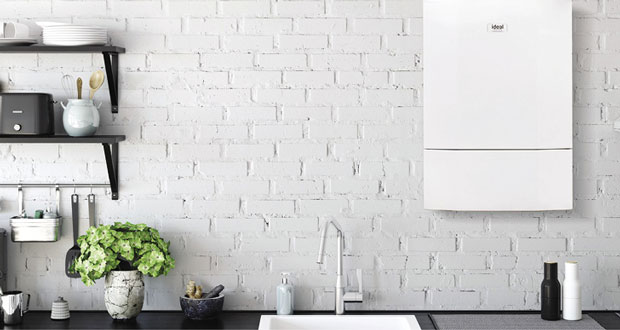 Charlie Mowbray, Commercial Product Manager at Ideal Heating, discusses why heat networks are the greener way of heating properties
Charlie Mowbray, Commercial Product Manager at Ideal Heating, discusses why heat networks are the greener way of heating properties
Tackling the climate crisis is being viewed from the broader perspective on how we adopt more sustainable ways of living. A considerable part of this is the debate on how to implement low-carbon heating technologies that result in efficient changes to the way we heat our buildings.
In a bid to cut carbon emissions and drive the decarbonisation of the nation’s property stock, in September this year, the government announced the Green Heat Network Fund(i), a capital grant worth £270 million that is open to the public, private and third sector. This is part of the government’s wider commitment to reaching net zero greenhouse gas emissions by 2050.
Heat networks are set to play a major role in how the government plans to tackle the climate crisis and support the development of low and zero carbon (LZC) buildings across the UK. The government’s Clean Growth Strategy(ii) forecasted that heat networks have the potential to meet around 20 per cent of the demand for heating and hot water in buildings by 2050.
As facilities managers, whether you have a portfolio of stock that you are looking to upgrade, or are simply just keen to get ahead of the curve and learn more, now is a key time to build your knowledge of heat networks.
WHAT IS A HEAT NETWORK?
More commonly associated with New York City and the iconic sight of steam coming up through manhole covers, heat networks have seen a resurgence in the UK as forward-thinking developers look for more energy efficient ways to heat domestic, commercial and public properties.
Heat networks, also known as district heating, can be as large as a whole city or as small as a single block of flats, a hospital, an office building or even a school.
From a central source, heat is supplied to end users through a network of insulated pipes in the form of hot water, with individual gas boilers replaced by Heat Interface Units (HIU) or sub-stations. Today, there are more than 14,000 heat networks in the UK, supplying heat and hot water to around half a million homes and businesses.
HIUs service a property by transferring heat from the heat network system into the building’s heating and hot water systems. For example, our POD HIU looks very much like a traditional gas boiler from the outside, has similar controls and is normally installed out of the way in a store cupboard or a service hatch compartment.
However, instead of burning gas to provide heating and hot water in each individual dwelling or space, a HIU works by using the thermal energy in the hot water which is piped through the network to heat smaller hot water and heating systems.
For the facilities managers, POD and a heat network provide a means to meet carbon reduction targets, integrate renewable energy sources and therefore achieve better Standard Assessment Procedure (SAP) and Simplified Building Energy Modelling (SBEM) ratings.
INCREASING EFFICIENCY
For a facilities manager working in a building that has a heat network or is looking to install one, a key element to its success is understanding how to achieve the best level of efficiency from the system. Ensuring all the distribution pipework is sufficiently insulated is crucial. By generating heat collectively in the energy centre, and having a properly insulated distribution network so heat loss can be minimised, better efficiency can be realised.
The collective generation of energy and economies of scale involved can make heat networks far more efficient than every end user or building space having their own individual boiler, while also increasing the potential for lower energy bills.
GOING GREEN
Heat networks can play a vital role in the push to achieve net zero greenhouse gas emissions. Energy agnostic, heat networks are incredibly versatile, able to use a wide variety of energy sources, often using renewable energy and heat recovered from commercial or industrial processes which would otherwise be wasted.
One key advantage of heat networks is that they tend to be more readily adaptable in the type of building they can be applied to. Provided the existing network infrastructure is there or there’s the option to install it, generally speaking minimal changes need to be made to the building fabric or the dwelling’s heating systems.
Heat networks give building owners and managers peace of mind that they can facilitate future heating transformations.
Undoubtedly, further policies will be implemented to help the UK go green which facilities mangers will have to adapt to, but for now heat networks will provide a flexible solution for new buildings and retrofitting legacy stock.
It’s clear that there will not be one ‘silver bullet’ that will enable the UK to hit its net zero target and decarbonise heat in property stock. A diverse range of solutions to decarbonise heat must be considered, but we believe heat networks and HIUs will be a vital piece in the puzzle.





